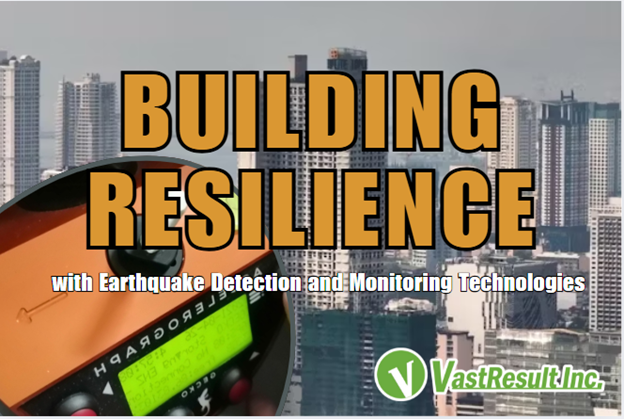
In earthquake-prone countries like the Philippines, building resilience is not optional—it’s essential. With cities expanding vertically and horizontally, and populations growing denser, the threat posed by seismic activity grows more significant by the day.
Fortunately, we are no longer at the mercy of earthquakes. Thanks to modern earthquake detection and monitoring technologies, communities, businesses, and governments can prepare more effectively, respond faster, and recover smarter. These innovations are now critical tools in creating earthquake-resilient infrastructures and saving lives.
What Is Earthquake Resilience?
Earthquake resilience refers to a community or structure’s ability to:
Withstand seismic forces with minimal damage
Respond quickly and effectively to emergencies
Recover and restore normal operations in the shortest possible time
The foundation of this resilience is timely and accurate information—something only achievable through reliable earthquake monitoring systems.
The Role of Earthquake Detection and Monitoring Technologies
Modern earthquake technologies give us real-time insights into seismic activity. These systems are designed not just to detect quakes but also to analyze ground motion, structural response, and potential risks. With these insights, stakeholders can make informed decisions before, during, and after an earthquake.
Here are the core technologies driving this seismic resilience:
1. Seismometers
Seismometers are sensitive instruments that detect and record even the smallest ground movements. They’re essential for:
Identifying the epicenter and magnitude of an earthquake
Understanding the seismic history of an area
Providing data for long-term structural design and risk assessments
2. Accelerographs
Accelerographs are key to understanding how a building or structure responds to ground shaking. Installed in high-rise buildings, bridges, and other critical infrastructure, these instruments measure:
Structural vibrations
Duration and intensity of seismic events
This data is vital for post-earthquake evaluations and is often required by the Building Code of the Philippines for specific structures.
3. Real-Time Seismic Monitoring Systems
These are interconnected systems of sensors and software that provide instantaneous seismic data. When an earthquake occurs:
Authorities receive real-time alerts
Emergency protocols can be triggered
Data is stored and analyzed for post-event planning
Some regions are already exploring Earthquake Early Warning Systems (EEWS), which offer precious seconds to evacuate or shut down critical systems before strong shaking begins.
4. Data Integration Platforms
Collected data isn’t useful unless it’s understood. Today’s technologies offer visualization dashboards and analytics platforms that help:
Engineers assess structural integrity
City planners identify high-risk areas
Disaster agencies coordinate faster responses
Why This Matters: Key Benefits of Earthquake Monitoring
✅ Protects Lives and Property
By tracking seismic activity in real-time, buildings can be evacuated, and emergency services mobilized faster—saving lives and reducing injuries.
✅ Supports Smarter Infrastructure Design
Data from past earthquakes informs future construction practices. Engineers can design buildings that are more resistant to local seismic patterns.
✅ Strengthens Compliance and Risk Management
Government agencies like PHIVOLCS and the Bureau of Fire Protection (BFP) encourage or require seismic monitoring systems in critical infrastructure. Compliance ensures not just safety, but legal and operational continuity.
✅ Builds Community Confidence
Knowing that a building or city is equipped with advanced earthquake monitoring tools fosters public trust, especially in schools, hospitals, malls, and high-rise condominiums.
Building Resilience Starts Before the Quake
Being earthquake-resilient isn’t just about reacting after disaster strikes. It’s about investing in proactive measures that reduce risk from the ground up. Installing earthquake detection and monitoring devices is a key step in this strategy.
Whether you’re a property developer, building owner, local government official, or business operator, adopting this technology positions you as a champion for safety and preparedness.
Final Thoughts
Earthquakes may be inevitable, but disaster doesn’t have to be. With earthquake detection and monitoring technologies like seismometers, accelerographs, and real-time systems, we can build stronger, safer, and more resilient communities.
Preparedness is not a one-time event—it’s an ongoing commitment. And that commitment starts with knowing what’s happening beneath your feet.
Interested in installing earthquake monitoring systems for your building or facility?
We offer expert installation of accelerographs tailored to your structure. Contact VastResult today at (02) 8404 0740 or email us at support@vastresult.com to find out how earthquake instrumentation can protect your investment and your people.
